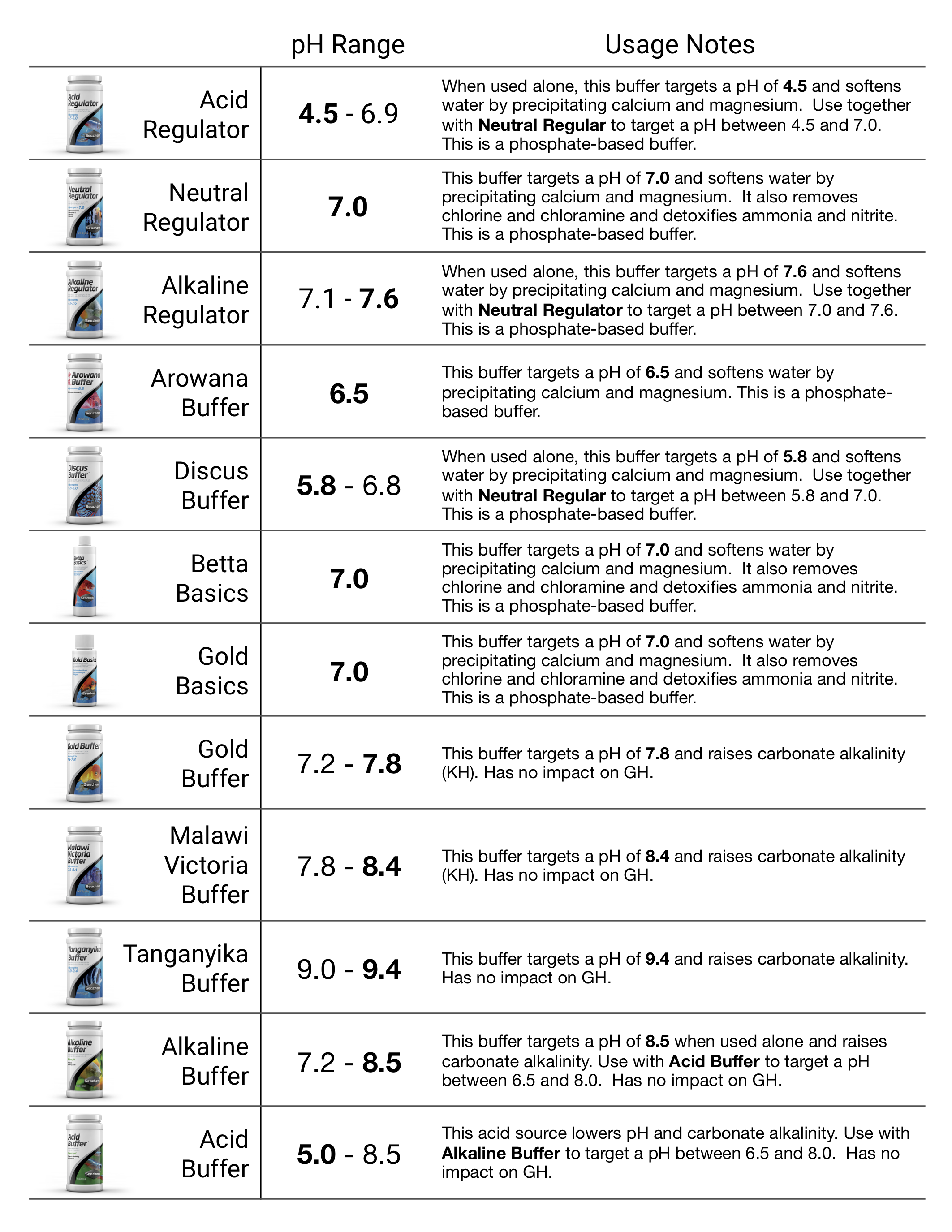If you're having trouble changing your pH, it's likely that you have a buildup of buffers or acids (or both!) in your system. These can hold your pH in place despite repeated additions of buffers. You have a lot of options for buffers to change your pH, so check the graph at the end of the article for a quick guide to the freshwater buffers if you are confused!
If your pH is too low:
- Make sure your buffer targets the pH you want. It does no good to dose Neutral Regulator® (7.0) if you actually want a pH of 9.0. Make sure your chosen buffer or combination of buffers targets your desired pH.
- Check your alkalinity (KH). This is a measure of how resistant your pH is to change, and will go up when you add buffers like Neutral Regulator® to the system. Your alkalinity may be too low to counteract the amount of acids in your tank which are holding your pH down. If your alkalinity is too low, dose more of your chosen buffer.
- Do regular water changes. One of the primary causes of low pH in a freshwater system is a buildup of organic acids in the aquarium. Regular water changes with clean water dilute down these acids and prevent this depression of the pH.
- Address acid sources in the aquarium. Logs, peat moss, organic material, and certain kinds of aqua-soils will leach organic acids into the aquarium over time. Likewise, anything alive in the aquarium will produce acids that lower the pH and alkalinity. These acid sources need to be balanced by a sufficiently high KH. If you find that you have significant acid sources in your aquarium that are depressing the pH, you will need to maintain a higher alkalinity (use more of your buffer or regulator) to hold your pH at your desired level.
If your pH is too high:
- Make sure your buffer targets the pH you want. It does no good to dose Tanganyika Buffer™ (9.0-9.4) if you actually want a pH of 6.0. Make sure your chosen buffer or combination of buffers targets your desired pH.
- Check your alkalinity. This is a measure of how resistant your pH is to change, and will go up when you add buffers like Neutral Regulator® to the system. Your alkalinity is probably quite high, and is resisting any attempt to lower the pH We recommend to either seek out low-alkalinity source water and carry out water changes to dilute the buffers, or to do small, regular doses of Acid Buffer™ (testing your pH after every dose) until your pH is at or near your desired level. Then, dose your preferred buffer or combination of buffers to "set" the pH and prevent further changes.
- Avoid overusing buffers. If your alkalinity (KH) is too high, it will tend to drag your pH upward. As with all things in fish-keeping, moderation is key when trying to maintain a stable pH.
- Address buffer sources in the aquarium. Certain types of substrate, rocks, decorations, and filter medias will leach buffers into the water that raise your pH. If you are trying to maintain a low pH, you will need to opt for decorations and substrate that will not do this.

0 Comments